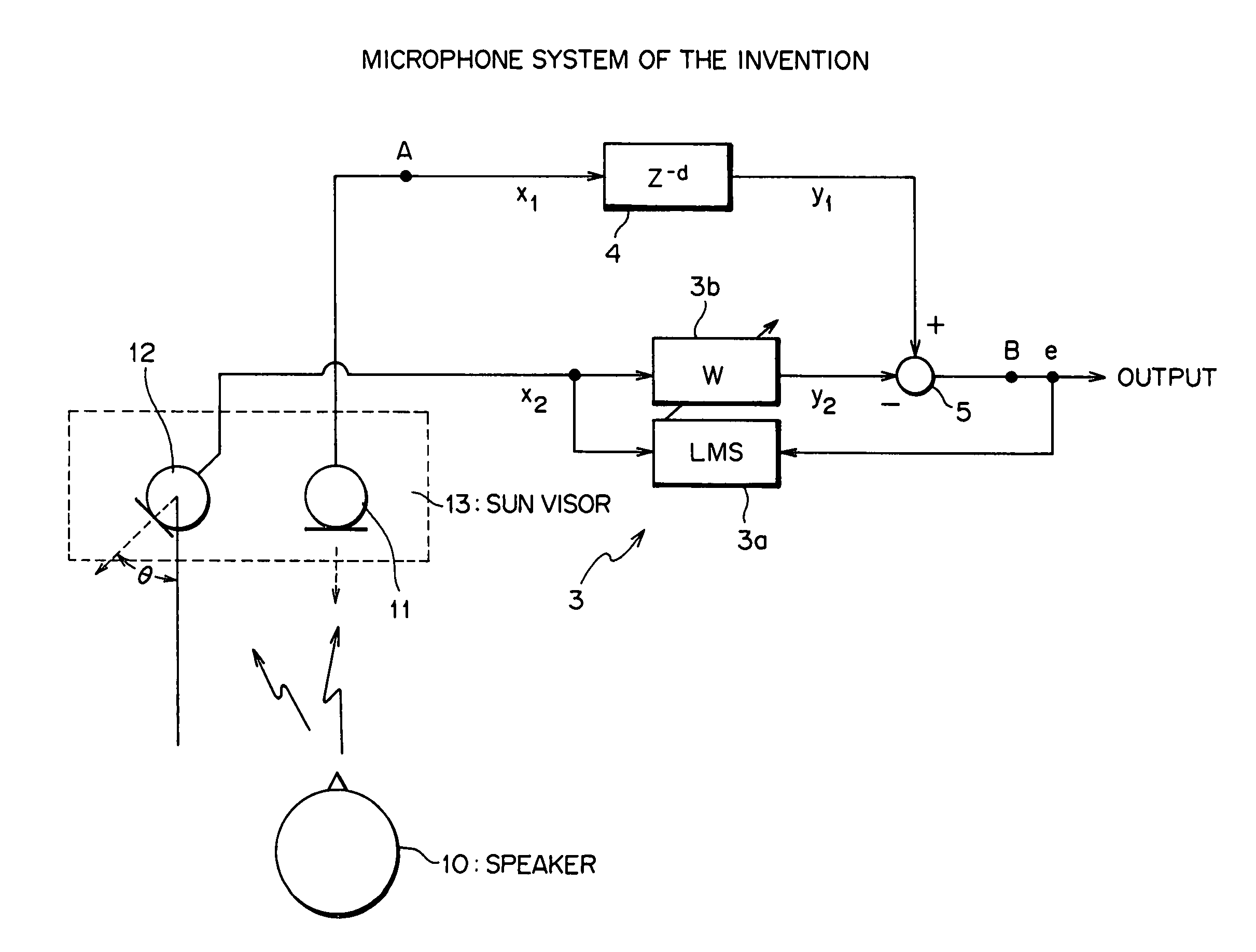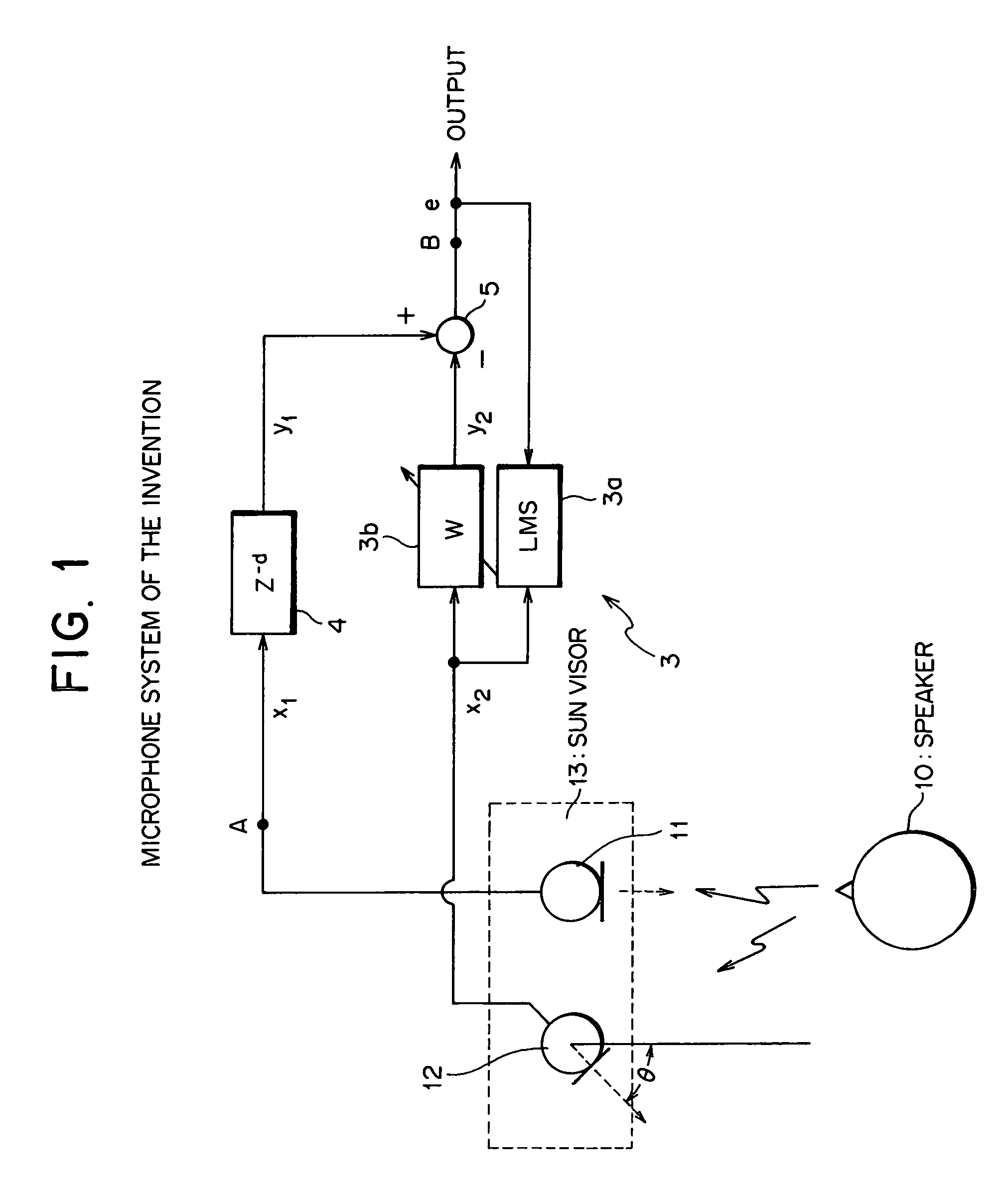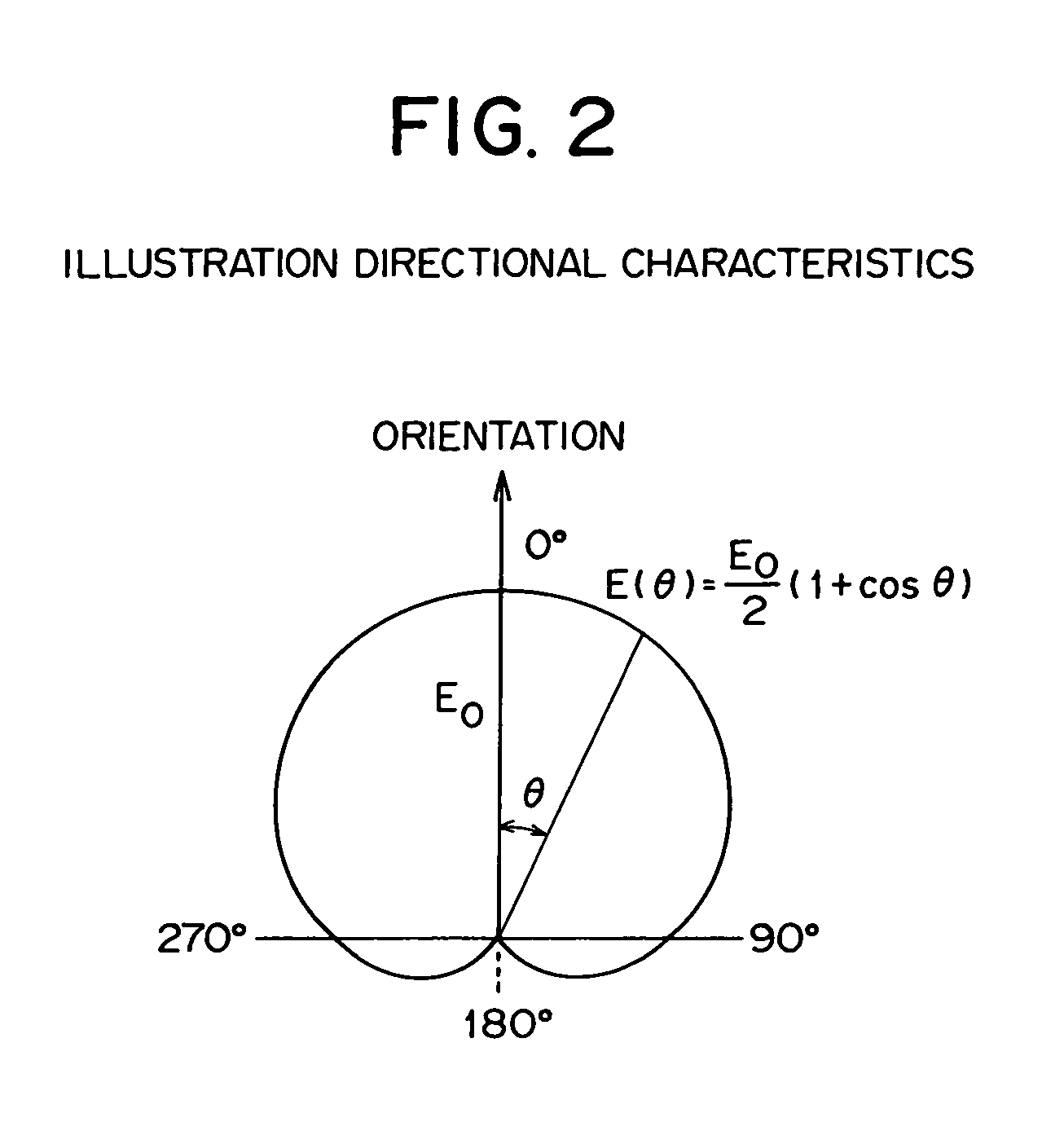Microphone system
a microphone and microphone technology, applied in the direction of transducer details, electrical transducers, electrical apparatus, etc., can solve the problems of unavoidable deterioration of the foregoing recognition capability, inability to significantly improve and the sn ratio of the voice signal will hardly be improved, so as to achieve the effect of improving the sn ratio of the voice signal
- Summary
- Abstract
- Description
- Claims
- Application Information
AI Technical Summary
Benefits of technology
Problems solved by technology
Method used
Image
Examples
first embodiment
1. First Embodiment
[0053](a) Configuration of the Microphone System
[0054]FIG. 1 illustrates a configuration of the microphone system relating to the first embodiment of the invention, in which the same symbols are applied to the same components as in FIG. 17. In FIG. 1, 10 signifies a speaker, for example, a driver of a car, and 11, 12 signify first and second microphones having directional characteristics as to the voice reception sensitivity. The directional characteristics of the microphones have a unidirectional sensitivity characteristic, as shown in FIG. 2. That is, when the orientation is given by θ=0°, and the sensitivity at θ=0° is given by E0, the sensitivity at an arbitrary angle θ is expressed by the following equation:
E(θ)=E0(1+cosθ) / 2
and the sensitivity of the microphone decreases as the direction of the microphone deviates from the orientation θ=0°.
[0055]As an example, the first and second microphones 11, 12 in FIG. 1 are mounted on the sun visor 13 above the driver's...
second embodiment
2. Second Embodiment
[0082](a) Configuration of the Microphone System
[0083]FIG. 8 illustrates another configuration of the microphone system relating to the second embodiment of the invention, in which the same symbols are applied to the same components as in FIG. 1. The difference lies in that the target response setter 4 in FIG. 1 is configured by an adaptive signal processor 4′ in FIG. 8. In the microphone system in FIG. 1, only the adaptive signal processor 3 executes the adaptive signal processing to minimize the power of the error signal e; however in the microphone system in FIG. 8, the adaptive signal processor 3 and the adaptive signal processor 4′ execute the adaptive signal processing to minimize the power of the error signal e.
third embodiment
3. Third Embodiment
[0084](a) Configuration of the Microphone System
[0085]FIG. 9 illustrates another configuration of the microphone system relating to the third embodiment of the invention, in which the same symbols are applied to the same components as in FIG. 1. In the drawing, 10 signifies the driver of a car, and 11, 12 signify the first and second microphones. The first microphone 11 is installed on the ceiling right above the face of the speaker 10, and the second microphone 12 is installed on the ceiling on the occipital side about 1 to 5 cm from the first microphone position.
[0086]3 signifies an adaptive signal processor which receives an error signal e and an output signal x2 from the microphone 12 as the reference signal, and executes the adaptive signal processing on the basis of the LMS (Least Mean Square) algorithm so as to minimize the power of the error signal e. In the adaptive signal processor 3, 3a signifies an LMS calculator, 3b an adaptive filter with a configura...
PUM
 Login to View More
Login to View More Abstract
Description
Claims
Application Information
 Login to View More
Login to View More - R&D
- Intellectual Property
- Life Sciences
- Materials
- Tech Scout
- Unparalleled Data Quality
- Higher Quality Content
- 60% Fewer Hallucinations
Browse by: Latest US Patents, China's latest patents, Technical Efficacy Thesaurus, Application Domain, Technology Topic, Popular Technical Reports.
© 2025 PatSnap. All rights reserved.Legal|Privacy policy|Modern Slavery Act Transparency Statement|Sitemap|About US| Contact US: help@patsnap.com



